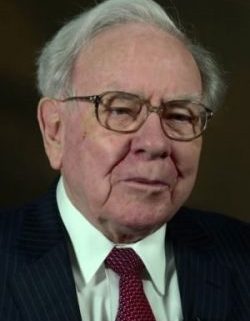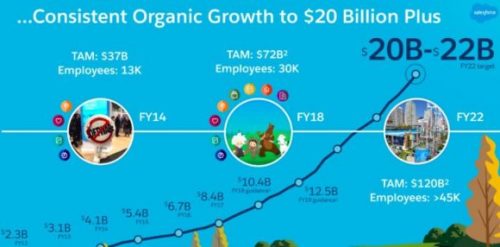Mad Hedge Technology Letter
June 5, 2018
Fiat Lux
Featured Trade:
(THE DIGITAL NOMAD ISSUE)
People want a better life.
And the Internet has connected the outermost populations giving them a feed into the biggest transformation ever to grace mankind.
The applications of the Internet are countless and promise to deliver huge gains in productivity while lifting entire populations out of poverty.
The next leap of digital migration will see the remaining 3 billion of unconnected users connected offering new markets for our tech behemoths.
Every day that passes by, not only does the value of technology companies rise, but the level of expertise increases at a hyper-accelerated pace.
The Mad Hedge Technology Letter diligently chronicles the never-ending paradigm shifts in the industry.
Yes, indeed, it's a sellers' market for anything closely resembling tech.
Recent stories are legion.
The Long Island Iced Tea Corp. beverage company rebranded itself as Long Blockchain and saw shares shoot up 289% on the basis the company might "diversify."
The human capital fueling the outperforming tech sector is like the blood that pumps through the arteries.
Now, governments are getting in on the act, crafting policies that attempt to lure in top tech talent.
Digital nomads are frequently typecast as tech-savvy Millennials remotely working via an Internet connection while living as an expatriate.
However, they come in all shapes and sizes and that is the main point.
The Baltic nation of Estonia has been one of the leading lights in tech innovation, rolling out Skype before Facebook and Twitter existed.
Skype was entirely comprised of local Estonian developers who achieved this in the early 2000s.
Quite a feat for such a small nation.
This charming Baltic country is stepping up its game by announcing a new visa targeted at digital nomads.
In January 2019, Estonia will roll out a revolutionary visa allowing digital nomads to work in Estonia all year round. This visa also includes 90 days of travel in the Schengen Area of mainland Europe.
This visa isn't targeted at EU citizens who already reap the benefits of working all over the European Union.
Estonia is on a mission to amass as many tech-savvy workers from far-flung places around the world, incorporating them into Estonian life, and boosting the level of innovation in a country that prides itself as a start-up hub.
And more importantly jacking up the volume of tech workers.
These digital nomads create communities that harness an enormous flow of tech know-how. Usually their friends are fellow like-minded digital nomads that roll in packs with each other.
Tallinn, Estonia has rapidly turned into a top 10 digital stronghold attracting hordes of digital nomads.
If technical issues arise, help is usually just a shout across a coffee shop and presto!
Everything is fixed.
The message is that simple.
Estonia does not care where you are from, how many sugars you drink with your tea, or how you style your hair in the morning.
The concern there is if you know how to use a computer well or not. Plain and simple.
The global talent shortage is dire, and this is just the beginning.
Try hiring an experienced artificial intelligence engineer on the cheap, and headhunters will just hang up and delete your contact information. Better to think of 10 figures.
In fact, something must give because visa policies are entirely based on legacy systems of yore.
The world has moved on and visa policies should reflect it.
Expect more exotic visa policies pinpointed exactly toward the type of immigrants that nations want as part of their national policy.
With the advent of low-cost carriers such as airBaltic, Spirit Airlines, and Norwegian Air, taking a flight halfway across the world is only a $200 proposition thanks to wonders of deflation and competition.
And the further creation of private short-term rental app Airbnb has allowed digital nomads a pipeline of private housing to tap into when they jet set across the globe.
The common denominator that denotes a perfect location for a digital nomad is cost.
Locations such as Copenhagen and Monaco are places of cultural beauty but pricey for a digital nomad to operate from as the wallet turns lighter consumed by the additional marginal cost of housing and hooking up a decent Internet connection.
Estonia and the rest of the Baltic countries are affordable and boast great digital infrastructure.
After the collapse of the Iron Curtain, these post-Soviet republics stumbled.
Jaded by generations of relying on the Soviet infrastructure, adapting to independence meant building everything from scratch.
Without the Soviet infrastructure, which was all they knew, developing a thriving country out of the ashes of the Soviet implosion was agonizing.
These countries that hug the border of Russia bet the farm on creating a digital infrastructure and invested the little they had into enhancing connectivity.
It's no shocker the Baltic countries of today boast a faster average Internet connection than America today.
In general, antiquated government systems are mired in bureaucracy and operate rudimentary systems straight from the history books.
Many governments suffer from the short-termism of the highest leaders doing everything possible to improve narrow interests irrespective of the big picture and usually solely focused on reelection.
This problem is echoed in America with the government digital infrastructure 20 to 30 years behind.
It is only now that Washington is reaching out to Silicon Valley to upgrade its dinosaur systems of yore.
Estonia is also grappling with aging demographics as with many of the Western powers and must lure 440,000 people just to maintain the current population of 1.3 million people.
Many of these Baltic countries lose huge swaths of youth that migrate to higher wage countries in Western Europe.
Expectedly, they never come back unless just visiting relatives in effect crushing the local birth rate.
The brain drain has also spilled over to low-income countries in Central and Eastern Europe such as Moldova, Poland, and the Ukraine.
Young people want a better life standard and will move across the universe 10 times over to find it.
Many of these Baltic countries have lasting ethnic tensions - a holdover from Soviet times - because of the substantial leftover minority of Russian-speaking Russians dotted around the Baltics.
The digital nomad visa is seen as a strong pivot to the West, attempting to shake off the Soviet heritage and Russian people.
Baltic countries do not want to be the next land grab for Russian President Vladimir Putin. Creating a powerful tech industry would be a key victory for the pro-West government.
Ethnic Russians still make up about 20% to 30% of the Baltic countries' population and live in the face of locals who view them as unfortunate riffraff.
Sometimes, the progressive policies have backfired.
Latvian banks have been a recipient of a massive witch hunt.
Washington has accused Latvian banks of being a facade for laundering Russian capital.
These negative headlines indeed will exacerbate ethnic tension.
Placing an army of digital nomads along the Russian border effectively acts as a deterrent and real army.
Since the aggregated value of digital nomads grows by the day, businesses will have incentives to keep the nomads along the border innovating and profiting from the global digital migration that is taking place as I write this.
The Estonian government has been bold and in some ways is acting with a start-up mentality itself.
This young, audacious government looks to scale up as fast as possible. Visionary policy is seen as the solution to maneuvering around long-lasting problems.
These pro-growth tech policies could invigorate local youth causing them to stay at home rather than flee to greener pastures.
This lifeline might slow down the 60% of local Estonians who dream of moving to a place where they can live better.
Rebranding itself as the digital nomad epicenter is a risky move that most governments wouldn't dare to do.
It's easy to ignore the brain drain in the Baltics while I am living in the Bay Area.
Silicon Valley has been drawing in the cream of the crop for years.
Developers want to stay in California because of the high standard of living, which is even nicer on a developer's salary.
No doubt the Bay Area has poached its share of Baltic working professionals.
However, this Estonian policy starts with the low-hanging fruit as the biggest names in the industry will gravitate toward the oodles of venture capital and large pool of talent. Unfortunately, that place is not the Baltics.
You must learn how to crawl before you can walk. If this visa experiment takes off, it could be a game changer while nudging the Baltics closer into the West's orbit of influence and raising income levels.
A win-win situation.
As for John Thomas. I won't be taking a $200 flight to Estonia to work in a coffee shop.
I prefer Incline Village, Nevada, and Zermatt, Switzerland, as my favorite digital nomad hangouts.
If it's not broke, don't fix it.
See you there in the summer!
On My Way to Switzerland
Chiang Mai, Thailand - Another Digital Nomad Stronghold
_________________________________________________________________________________________________
Quote of the Day
"As tech leaders we have to admit that we are hugely disconnected with our nation. I don't like it but have to recognize this issue," - said current CEO of Uber Dara Khosrowshahi in 2016.
Mad Hedge Technology Letter
June 4, 2018
Fiat Lux
Featured Trade:
(THE INNOVATOR'S DILEMMA),
(UBER), (WMT), (SNAP), (MSFT), (GOOGL), (AAPL), (GM), (IBM)
I must confess, innovation can't be taught.
You are innovative, or you aren't. Don't pretend otherwise.
Innovation drives companies to outperform.
The economic environment becomes more cutthroat by the day rendering complacent companies obsolete.
Top-quality innovation leading to outstanding entrepreneurship is a well-traversed theme transcending industries across the American economic landscape.
The reservoir of innovation in 2018 is primarily flowing from one narrow source - the tech sector.
This is the primary motive for many adjacent industries to incorporate tech expertise into existing and commonly ancient legacy systems.
Tech promises laggards a ride atop the gravy chain.
In many instances, these companies are grappling with existential threats from all directions.
The best example is Walmart (WMT), which effectively mutated into the next FANG with its majority stake in Indian e-commerce juggernaut Flipkart. This deal followed its purchase of Jet.com in 2016, which was its first foothold in the e-commerce world.
Traditional companies are becoming tech companies because of the ability to innovate all leads through the fingertips of talented coders.
When all roads lead to Rome, you will have to go through Rome.
The hunger for innovation has had major implications to the financial side of technology.
The story picks up from a recent report disclosing the 2017 remuneration of co-founder and CEO of Instagram competitor Snapchat (SNAP) Evan Spiegel.
The $637.8 million he received in 2017 was the third-highest annual compensation ever to be collected by a CEO.
Snapchat has tanked following its 2017 IPO and the main reason is Facebook is stealing its lunch and leaving Snap the crumbs on which to nibble.
Instagram, using a cunning strategy of cloning Snap's best features, single-handedly bludgeoned Snap's share price cutting it by half after the successfully launched IPO.
Snap has been an unequivocal sell on the rallies stock since the inception of the Mad Hedge Technology Letter and the disastrous redesign did no favors either.
My first risk off recommendation was Snapchat and at the time it was trading at $19. To revisit the story, please click here.
Microsoft (MSFT) is a great stock because it posts accelerated revenue and earnings, while Snapchat is a terrible company because it produces accelerated losses and lousy user growth.
A company almost 100 times smaller than Microsoft should not be struggling to grow.
It's a failure of epic proportions.
Small companies expand briskly because the law of numbers is leveraged in their favor and the tiniest bump of additional business has a larger effect on the bottom line.
As it stands, Snapchat lost $373 million in 2015, and followed that up with a disastrous $514 million loss in 2016, and a gigantic $3.45 billion loss in 2017.
Losses accelerated by 800% but annual revenue only doubled last year.
It was no shocker that the poor relative performance resulted in the sacking of 100 Snapchat developers.
Smart people would assume an annual salary of this magnitude (Spiegel's) would be the result of excellent performance.
Why else would a CEO get a lavish payout?
I'll explain.
The demand for tech knows no bounds.
In this environment, venture capitalists will pay up for brilliant ideas.
The problem is that brilliant ideas don't grow on trees.
The few cutting-edge ideas have stacks of money thrown at them.
In this sellers' market, founders can cherry-pick the best financing deal that will enrich them the quickest and empower them the most.
Multiple offers have become the norm just as with the Silicon Valley housing market.
The consequences are the premium for these brilliant ideas keeps rising and investors keep paying higher prices without a second thought.
Therefore, founders and CEOs are opting for the financial packages that offer them bulletproof voting shares, allowing the innovators to control operations to the very last detail.
The founders are responsible for leading innovation, and investors are offering glorious pay terms for this innovation because it can't be substituted. Low-quality tech has less of a premium because the technology can easily be rebranded and substituted.
Technology from the ground up is slowly being automated away leaving runaway valuations the norm.
Giving the keys to the Ferrari makes sense as tech companies formulate long-term strategies based on scale. And securing job security without the threat of an activist takeover offers peace of mind for CEOs who are focused on the daily grind.
Knowing their baby won't get stolen from the carriage goes a long way in tech land.
Venture capitalists are reticent about following through with proper governance because they do not want to alienate the innovators who could choose to stop innovating.
These investors also know that tech is the least regulated industry in the world, so it's better to turn a blind eye to cunning growth strategies that push the border of regulation.
The competition to fund these emerging tech companies is borderline criminal.
Uber declined a $3 billion investment by no other than the Oracle of Omaha Warren Buffett.
Buffett described himself as a "great admirer" of Uber CEO Dara Khosrowshahi.
Uber is one of the most unlikely Warren Buffett investments because it doesn't create anything and burns cash faster than a Kardashian.
Buffett's faith in Uber underscores the reliance on tech to fuel the stock market to new heights.
Buffett also admitted mistakes on missing out on Alphabet (GOOGL) and Apple (AAPL).
Rightly so.
Then add in the mix of SoftBank's $100 billion vision fund that just announced an upcoming sequel with another $100 billion vision fund.
Where is all this money flowing into?
Of the tech companies that went through an IPO last year backed by venture capitalist money, 67% relinquished superior voting rights to key founders, a rise of 54% since 2010.
Compare that to non-tech companies that only allow 10% to 15% of CEOs to institute a voting structure that will put them in charge indefinitely.
In many instances, the persona of these ultra-famous tech CEOs has taken on a life of its own.
Elon Musk, CEO of Tesla, is the most prominent example of a celebrity tech innovator milking every possible penny from his shareholders and is not shy about flaunting it.
News has it that Musk needs to go back to the well for another stage of financing later this year.
Don't worry, the money will be there in this climate.
Buffett's rejection was due to losing out to SoftBank, which beat out Buffett to invest in Uber.
SoftBank just announced a $3.35 billion investment into GM's (GM) autonomous driving unit called Cruise enhancing the best big data portfolio in the world.
At this pace, CEO of SoftBank Masayoshi Son will have a piece of every major big data company in the world.
This all bodes well for tech equities as the insatiable hunt for emerging, innovative tech spills over into daily equity market driving up the prices for all the top innovating public companies such as Salesforce, Amazon, Microsoft and Netflix.
Buffett, down on his luck after being shafted by Uber, picked up more Apple shares.
He sold all his IBM (IBM) shares after reading the Mad Hedge Technology Letter advising him to stay away from legacy companies.
Smart move, Warren. You can pick up the tab for our next lunch date.
If you have a few billion to throw around, expect multiple offers over the asking price for any high-grade tech innovation.
The going rate is shooting through the roof and you might NEVER be able to sack the founder.
Caveat emptor.
_________________________________________________________________________________________________
Quote of the Day
"We knew that Lyft was going to raise a ton of money. And we went (to their investors): 'Just so you know, we're going to be fund-raising after this, so before you decide whether you want to invest in them, just make sure you know that we are going to be fund-raising immediately after.' " - said former CEO and founder of Uber Travis Kalanick when asked how he copes with competition.
Mad Hedge Technology Letter
June 1, 2018
Fiat Lux
Featured Trade:
(THE TECHNOLOGY NIGHTMARE COMING TO YOUR CITY)
I tell people at my strategy luncheons that living in the San Francisco Bay area is like living in the future.
There is an explosion of high tech innovation going on here, and we locals often find ourselves the guinea pigs for the latest hot products.
However, sometimes the future is not such a great place to be.
I learned this the other day when I received a parking ticket in the mail. I didn't recall finding a notice of violation tucked under my windshield wiper in the recent past, so I looked into it.
To my chagrin, I learned that the city is now outfitting its buses with video cameras pointing forward and sideways.
The digital recordings are then transmitted to parking control officers sitting behind computer screens for review. They issue tickets, which are mailed to the registered owners of the vehicles.
San Francisco suffers from one of the worst parking nightmares in the country. The streets were never planned - they just sort of happened on their own during the frenzy of the 1849 gold rush.
They were built to handle the traffic of horses and carriages, and later cable cars, not the crush of traffic we get today.
Sky-high real estate prices have driven millions into the suburbs across the bridges over which they must commute. So, parking has always been in short supply and it is very expensive. When I drive into the city for a Saturday night dinner, sometimes the parking tab is more expensive than the meal.
Newly minted millionaires from tech IPOs are now buying vintage Victorian homes, and then retrofitting garages underneath them. Every time this is done, it eliminates another parking spot on the street to make room for the driveway.
So, while the traffic is increasing, the number of parking spots is actually declining.
The city originally installed the cameras to catch offenders driving in bus lanes during rush hour. When they discovered that the cameras also captured the license plates of illegally parked cars they expanded the program. Last year 3,000 such tickets were issued.
The program has been so successful that the cash-strapped city will greatly expand it this year. And with a great San Francisco track record to point to, the firm selling the system is planning on going nationwide. Soon it will come to a city near you.
Like I said, sometimes the future is not such a great place to be.
Parking in San Francisco Can be Tight
_________________________________________________________________________________________________
Quote of the Day
"A pessimist sees the difficulty in every opportunity; an optimist sees the opportunity in every difficulty," said the late British Prime Minister, Winston Churchill.
Mad Hedge Technology Letter
May 31, 2018
Fiat Lux
Featured Trade:
(HOW SALESFORCE RAN OVER ORACLE),
(CRM), (ORCL), (MU), (RHT), (MSFT), (INTC), (AMZN), (GOOGL)
Modern tech has an unseen dark side to it.
Coders relish the opaqueness surrounding the industry infatuated with developing the next big thing to take Silicon Valley by storm.
There is nothing opaque about the Mad Hedge Technology Letter.
I grind out recommendations and you follow them. Period. End of story.
To put it mildly, the letter has gotten off to a flying start since its inception in February 2018, and there is no looking back, only looking forward.
Micron (MU), Red Hat (RHT), Microsoft (MSFT), and Intel (INTC), just to name a few, have been solid recommendations standing up to all the nonsense and mayhem permeating throughout the periodically irrational markets.
Have you noticed lately when you open up the morning paper while sipping on a steaming mug of Blue Bottle Coffee, that almost every story is about technology?
It's not a mistake. I swear.
Technology is permeating into the nooks and crannies of our society and the leaders of this movement are laughing all the way to the bank.
One of those aforementioned pioneers is no other than local lad, Salesforce CEO and perennial Facebook basher Marc Benioff.
I recommended Salesforce at $110 and it was one of the first positions in the Mad Hedge Technology portfolio.
You can't blame me.
I saw this stock pick from a million miles away and I will explain why.
Salesforce set ambitious targets that nobody thought were realistic at the time.
How high in the sky does Benioff want to build his castles?
By 2022, Marc Benioff set out sales targets of a colossal $20 billion per year.
Then Benioff gushed that Salesforce would pass the $40 billion mark, done and dusted by 2028 and $60 billion by 2034.
Remember that tech CEOs are incentivized to forecast ludicrous sales targets because it lures in the unknowledgeable investor.
Unknowledgeable or pure genius, it does not matter, Salesforce is an emphatic buy.
Salesforce is the ultimate growth stock.
In 2016, annual revenue came in at $6.67 billion, which is about the same size as a middle level semiconductor company.
They followed that up with $8.38 billion in 2017, demonstrating the parabolic shaped trajectory of the company.
At the end of fiscal year 2017, Salesforce announced that it expects revenue of around $12.60 billion in 2019.
The latest earnings report, Benioff disclosed full year guidance of $13.13 billion.
This puts Salesforce in the running to achieve its lofty aspirations.
Apparently, the castles Benioff is building aren't in the sky after all.
Theoretically, if Benioff expands the business into a $16 billion to $16.5 billion business by 2019, Salesforce will have a more than likely chance to pass the $20 billion mark by the end of 2020, a full two years than initially thought.
Salesforce will have ample wiggle room on the way to $20 billion if it is 2022 for which it aims.
Why am I rambling on about revenue?
It's the only metric that Salesforce investors value.
The company registered two straight years of less than $200 million in profits then followed it up with a less than stellar 2016 where it lost almost $50 million.
Don't expect any dividends from this neck of the woods anytime soon especially after acquiring MuleSoft, an integration software company, for $6.5 billion last quarter.
This purchase will add another $315 million of annual revenue to Salesforce's quest of eclipsing its future sales targets. This was after MuleSoft made $296.5 million in 2017 before it became a part of Marc Benioff's stable.
Benioff has proved a shrewd dealmaker, taking advantage of cheap capital to add suitable parts to his business.
Since 2016, Benioff has snapped more than 50 niche software companies that he rebrands as Salesforce products and sells them as add-on products.
This is further evidence that any funds available will be allocated toward reinvestment into products and services deeming any future dividend inconceivable, especially with the elevated revenue targets to surpass.
As for the business. Do we still need to talk about it?
Rip-roaring growth was seen across the board with total revenue increasing 25%.
Investors should stay away from any cloud company that is growing less than 20%.
Market intelligence firm International Data Corporation (IDC) voted Salesforce as the No. 1 client relationship management (CRM) platform for the fifth consecutive year.
It is the industry leader in sales, marketing, service, and increased market share in 2017, more than its closest competitors.
Larry Ellison must be tearing his hair out as Oracle's (ORCL) share price has been excommunicated to purgatory indefinitely.
Oracle is a company that I have been pounding on the tables to stay away from.
The Mad Hedge Technology Letter seldom recommends legacy companies that are still legacy companies.
Driving past his former estate, emanating from a sparkling perch in Incline Village overlooking Lake Tahoe, my neighbor gives me the goose bumps.
The property was later sold for $20.35 million. All told, Larry has around $100 million invested in real estate dotted around Incline Village. I sarcastically mentioned to him last time we bumped into each other to call me immediately when his $90 million estate in Kyoto, Japan, hits the market.
Oracle's position in the pecking order is a telltale sign of the inability to land the creme de la creme government contracts that ostensibly fall into Amazon (AMZN), Alphabet (GOOGL), and Microsoft's lap.
And it's not surprising that Larry is spending more time tending to his vast array of glittering luxury properties around the world rather than running Oracle.
Oracle is like a deer caught in the headlights and Marc Benioff is at the wheel.
On the Forbes 500 rankings, Salesforce has moved up almost 200 spots.
This position will rise as Salesforce is under contract booking a further $20.4 billion of commitments driven by its subscription services offering cloud products.
On the domestic contract front, it was much of the same for Salesforce, which inked premium deals with the U.S. Department of Agriculture, Kering, and sports apparel giant Adidas.
International companies such as Philips and Santander UK are expanding their relationships with Salesforce. A firm nod of approval.
Salesforce has been voted in the top three of most innovative companies for the past eight years by reputable Forbes magazine. The list was started in 2011, and it has never dropped out of the top three.
The gobs of innovation are the main logic behind the top five financial institutions expanding their relationship with Salesforce by an extra 70%.
Once companies start using the CRM platform, they become mesmerized with the premium add-ons that help companies run more efficiently.
Benioff has been a huge proponent of artificial intelligence (A.I.) and is an outsized catalyst to product enhancement gains.
Salesforce has taken Einstein, it's A.I. platform, and allowed all the applications to run through it.
The integration of Einstein has resulted in more than 2 billion correct predictions per day paying homage to the quality of A.I. engineering on display.
Instead of hiring a whole team of in-house data scientists, Salesforce is A.I. functionality by the bucket full and it is easy to use on its platform.
In some cases, incorporating Salesforce's A.I. into the business has bolstered other companies' top line by 15%.
Often, Salesforce's A.I. tools are declarative meaning the technology can identify solutions without a fixed formula.
Benioff has choreographed his strategy perfectly.
He is betting the ranch on unlocking data from legacy companies that migrate to his platform.
MuleSoft will help in this process of extracting value, then A.I. will supercharge the data, which is being unlocked.
What does this mean for Salesforce?
Higher revenue and more clients leading to accelerated growth. The share price has powered on north of $130, and after I recommended it at $110, I am convinced this stock will surge higher.
Salesforce is an absolute no-brainer buy on the dip.
Growth Means Shiny New Office Buildings
_________________________________________________________________________________________________
Quote of the Day
"If we become leaders in Artificial Intelligence, we will share this know-how with the entire world, the same way we share our nuclear technologies today." - said current President of Russia, Vladimir Vladimirovich Putin.
Mad Hedge Technology Letter
May 30, 2018
Fiat Lux
Featured Trade:
(WHICH UNICORN WILL EAT YOUR LUNCH?),
(UBER), (AIRBNB)
Hold onto your hats or you might get swept up.
Avoid the projectiles while you're at it.
There are no imminent tsunami warnings. But something else is happening in the world that you might want to know about.
Disruption.
The pace of disruption is accelerating beyond all recognition.
CEOs are here today and gone tomorrow, exiting through the revolving door of companies devoured by disruption.
Are we on the verge of the rise of the robots?
I wouldn't go that far ... yet.
But the truth is that disruption is redefining the world as we know it.
The latest stage of modern disruption came to us by way of smartphone apps.
This application created clear-cut platforms allowing companies to penetrate deep into the smartphone ecosystem where most of the youth are hanging out with consequences galore.
The unfolding of the sharing economy has been nothing short of breathtaking.
Take Uber.
Uber was so disruptive that its former CEO, Travis Kalanick, disrupted himself out of a job at Uber.
That is quite disruptive.
First, look at its business model.
Uber does not actually create intrinsic value.
It does not create something you can eat, sleep on, or imbibe.
Uber is a vanilla app that brings together a marketplace for riders and ride givers effectively becoming a de facto broker.
Brokers have been around since the advent of time.
This type of technology lacks quality, and half the undergraduate computer engineers in university could fabricate something similar with ease.
Disrupters formulate a plan, scavenge for weak points, identify backdoor entrances, then wreak havoc to the guts of the system.
At an auction late last year in 2017, New York City taxi medallions were going for a derisory $186,000, precipitously lower than the $1.3 million in 2014. A spate of taxi driver suicides ensued.
The 86%-plus drop in value is directly correlated to Uber's advancement into the taxi industry.
It's that simple.
Taxi drivers have been left holding the bag and in big-time debt crying their eyeballs out.
Buy low and sell high. I guess taxi drivers didn't get the message.
The initial point of attack was to render the taxi medallion utterly useless.
To find drivers of its own, Uber subcontracted regular people as drivers.
Genius! Another problem solved.
In one fell swoop, the Uber app made every adult with a driver's license a taxi driver anywhere in the world.
Ka-ching!
New York City capped the total amount of medallions in circulation at 13,587.
The flood of new drivers crushed the price of taxi fares around the world bettering the lives of the average Joe.
Uber also figured it would be cheaper to allow drivers to use their own private car, shedding the costs to maintain, finance, and service one of the highest inputs of taxi business models.
Uber and the rest of the tech industry benefit from being the least regulated industry in the world.
The lack of regulation was a golden ticket to test the rules of the road.
That is exactly what unfolded.
Management even approved an app inside the Uber app bent on skirting the challenges of secret strings organized by police enforcement.
The app, called Greyball, reaffirmed the company ethos of pushing regulation to the brink of no return.
Any emerging tech company not pushing the borders of regulation should not be in technology.
Everything reverts back to the fact that emerging tech is held in check by one metric - growth.
Growth solves anything in the eyes of tech investors.
Yes, it's unfair that Walmart and traditional media companies don't get the same free pass, but life is unfair.
Uber had incentive to break all the rules because surpassing growth targets would lure in additional financing.
The outperforming growth is the main logic justifying an investment in a cash-burning enterprise.
People don't like losing money but people with deep pockets will wait it out if they know there is a golden prize at the end of the road.
The administration has grossly failed to regulate technology, even after the Cambridge Analytica scandal came to light.
This all bodes well for technology companies.
Europe is the hotbed for global data regulation. Large tech companies have been astutely planning for the new General Data Protection Regulation (GDPR) rules to take effect.
The companies that do not create anything proprietary are at serious risk of being passed over in the history books.
Therefore, the aggressive tactics "broker apps" adopt are completely justified, and it is paying off in spades as the 2019 IPO approaches.
That upcoming momentous day will enrich many people associated with Uber and in hindsight, management might acknowledge that its initial wild ways were worth the price of the mild rebuke.
The underlying problem is tech disruption, and the success of it has many unintended consequences - particularly social upheaval and job losses.
Myanmar born "Kenny" Chow's body was found floating face down in the river around the Brooklyn Bridge after his family said he disappeared a few days ago.
This was the fifth New York taxi driver suicide in the past five months.
Chow had taken out high-interest loans to pocket his $700,000 New York City medallion and his precarious financial situation, brought upon by the success of Uber, led him to leap to his death.
Sadly, the thirst to grow means taking away other people's livelihood and even their option to live.
We know the pace of change is in full gear. However, the amount of people being economically and socially displaced is a worrying sign that public opinion cannot absorb the accelerating pace of disruption.
More regulation? Probably not.
Chow isn't the first person to lose a job because of technology and won't be the last.
Enter the hotel industry.
Accommodation-sharing app Airbnb was the end for hotels as we knew them.
Airbnb is the Uber of short-term rentals, matching renters with private home owners. They earn revenue by the servicing fee incurred for the brokering.
The harbinger of doom never came to materialize for the hotel industry, which is enjoying record profits - the likes we have never seen before.
The synchronized economic recovery fueled the demand for hotel rooms located in economic hubs close to urban centers.
As we found out, 90% of business travelers have no desire to stay in other people's houses, and the assortment of services hotels offer is critical for the prototypical business traveler.
The hotel industry saved its bacon while Airbnb is thriving. A win-win situation.
You thought wrong.
Airbnb services are a hit with tech-savvy Millennials, which data reveals as upper-middle class, young, and addicted to wanderlust.
The percentage of American travelers using private housing has more than quadrupled since 2010.
The surge in Airbnb users coincides with an explosion of global tourism led by the bourgeoning Chinese middle-class flooding tourist meccas all over the world.
The app that champions individuals to open up their personal homes is effectively pricing out locals from the dwindling supply of available residential housing.
The problem is most acute in Spain and every other tourist haven.
Madrid currently has 9,000 private units rented out to globe-trotting tourists, a sevenfold rise since 2013.
Of these 9,000 units, 2,000 are illegal and do not possess the necessary permits.
In the port city of Valencia, online-based private housing rose more than 30% since 2016.
To cope with the droves of tourists, the local government is attempting to pass legislation by removing 95% of the housing supply from house-sharing applications, in effect giving local residents back their neighborhoods.
Airbnb is another prime example of the severe lack of regulation that tech revels in, which in turn boosts the pace of technological disruption.
Blame the government. Lawless industries breed marginal behavior. We are all just a function of our environment.
Local neighborhoods are being ravaged by these short-term rentals and entire cities are being turned into massive tourist depots with little afterthought of the local people.
Examples are legion. Venice, Italy; Prague, Czech Republic; Dubrovnik, Croatia; Lisbon, Portugal. And the list goes on and on.
These cities are the victims of their own success and are grappling with hordes of tourists ruining the charm and souls of their beloved cities.
Granted, rapid development of the tourist industry trended toward this result, but the pace of upheaval has accelerated beyond anyone's wildest dreams.
For years, taxi drivers were seen as the first cohort to eventually be swept away with the magic of technology, but it happened too fast for people to accept.
I hope your uncle isn't a taxi driver.
Unfortunately, things are about to get a lot worse as the first stage of disruption transitions to the history books and the next stage is upon us.
The second stage will displace even more people as this unregulated industry sees everything as a zero-sum game.
This stage will incorporate higher grade tech - not just a broker app - that will change the world faster and to a larger degree than anything witnessed today.
And the next stage will incorporate proprietary technology the world has never seen before.
Imminent rollout of self-driving cars hitting the market in 2019 to 2020, will be the first progression for investors to digest.
Followed directly after self-driving will be the broad-based adoption of 5G delivering Internet connection speeds more than 100 times faster than current speeds, stoking a new leg up of commercialization.
As for now, Uber and Airbnb, which both plan to go public in 2019, are eye-opening success stories catapulting them into the top five of global unicorns along with the Uber of China (Didi Chuxing), the Apple of China (Xiaomi), and the Grubhub of China (Meituan-Dianping).
And if you somehow descend on Barcelona during this summer's tourist season, you might want to avoid the tourist protests.
_________________________________________________________________________________________________
Quote of the Day
"They counterfeit our goods, steal our intellectual property rights, and hack the computers of our industries and government. Something must be done about it." - said Director of the United States National Economic Council Larry Kudlow when asked about a specific country.
Legal Disclaimer
There is a very high degree of risk involved in trading. Past results are not indicative of future returns. MadHedgeFundTrader.com and all individuals affiliated with this site assume no responsibilities for your trading and investment results. The indicators, strategies, columns, articles and all other features are for educational purposes only and should not be construed as investment advice. Information for futures trading observations are obtained from sources believed to be reliable, but we do not warrant its completeness or accuracy, or warrant any results from the use of the information. Your use of the trading observations is entirely at your own risk and it is your sole responsibility to evaluate the accuracy, completeness and usefulness of the information. You must assess the risk of any trade with your broker and make your own independent decisions regarding any securities mentioned herein. Affiliates of MadHedgeFundTrader.com may have a position or effect transactions in the securities described herein (or options thereon) and/or otherwise employ trading strategies that may be consistent or inconsistent with the provided strategies.























